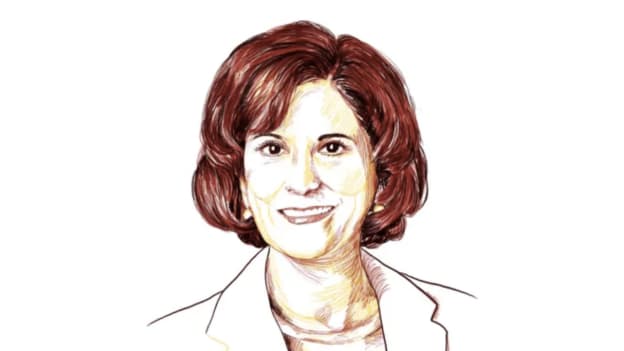Well-being is a business issue not an HR issue: Interview With Jeanne Meister

READ the September 2021 issue of our magazine: The Great War For Talent
According to the second annual HR Sentiment Survey conducted by Future Workplace, Boston University and Lyra Health, Employee Well-being & mental health are top priorities for HR leaders in 2021. The past year thrust mental health into the spotlight as a universal issue with significant implications for individuals, teams, and entire organisations. We can see employee well-being emerge as not just an HR priority but a business issue.
In a recent interview, we discussed the massive shift in strategic priorities in the workplace with Jeanne Meister, Managing Partner, Future Workplace. She talked about how organisations’ approach towards employee well-being is changing and also shared how leaders can create a culture of well-being with a holistic approach.
Here are the excerpts from the interview:
As leaders gear up for the now and the future of work, how do you see their priorities shift?
The last thing you want is to work for a leader that is proud of celebrating their long working hours at home.
That’s why we are now encouraging leaders to not only demonstrate empathy but develop a culture of well-being. Globally, burnout, isolation, and anxiety are real struggles that workers are facing and leaders must work to establish a culture that empowers their team to be proactive in sensing the signals of mental strain among their workforce. This involves training and being an empathic leader and making sure that the team members feel comfortable having these really difficult crucial conversations.
So, this is really new territory. And I think that understanding the signals of mental strain, and providing the resources and being comfortable having a difficult conversation is really important.
As the Future Workplace’s report highlights, HR leaders would invest more this year if they were able to double their budget, on employee experience & improving existing technology? How do you advise the HR leaders to create a balance between ensuring a smooth HR tech adoption and driving excellent employee experience?
So, first of all, the tech-enabled digital health and well-being market in the US alone is roughly $150 Bn today and estimated to grow at over 17% between 2021 and 2027. There are so many apps offered today to enhance well-being, such as apps allowing you to have online therapy sessions with a licensed therapist. Organisations are also leveraging employee assistance program (EAP) programs. But the online therapy sessions and these apps are not really a substitute for face to face personal interaction. Neither are they enough to combat the challenges of burnout, isolation, and anxiety at work. Well-being needs to be practised in the flow of work. The culture and the daily interactions of employees with leaders, colleagues, and work itself needs to reflect a sense of well-being and a culture of work where employees feel a sense of belonging. You may wonder how?
Forward looking companies are looking at well-being as a family issue. It's not just an individual worker issue. So they are expanding their well-being services to the entire family. Beyond well-being apps, they are extending child care benefits, giving increased personal time off, among other things.
Hewlett Packard, for instance, during the height of the pandemic here in the United States, realized one of the big stressors for working parents was not only working at home but managing homeschooling because schools here in the United States were closed.
So, Hewlett Packard created a really innovative solution in identifying a network of substitute teachers as a resource to working parents, to help them manage online homeschooling. Again, another important example of how forward-looking global companies with the resources are saying we can't just offer well-being services to the individual employee. It must be focused on the family unit.
As you mentioned, beyond apps and services, it is important to build well-being into the flow of work. How can organisations create this culture of well-being?
Creating this culture of well-being begins with the basics. Being non-judgmental and normalising rest and time off. Not celebrating long working hours. And then, the leaders really should step back and reflect and answer the question: What are the new services we can provide our employees to help them during this moment of need?. A decade ago, well-being initiatives were part of an employee benefit, today it's a critical element of the overall Experience (EX) journey of employees.
But then how do we build well-being into the flow of work?
It is not just a bolt-on series of apps and services that you're adding to the organisation. It needs to be a culture that touches all functions, all leaders model this culture and reinforce it in day to day interactions with team members.
While HR leaders should champion well-being, it is a business issue. Employees and leaders across functions must take the onus.
Another essential of building a culture of well-being is this notion of a hybrid workplace. There is a lot at stake. It means just about anything and everything. Organisations are redefining the role and purpose of the office, how much autonomy team members have in recommending the amount of in-person time in the office and communicating the safety protocols to ensure a healthy and safe in-person work environment.
For the hybrid workplace to be successful, HR leaders need to have a shared vision with business leaders on the hybrid workplace means and the principles that will guide this new way of working. Importantly, organisations must define the degree of team autonomy regarding when where and how their team members work. Next, they have to ensure the right technology both in the office, and in the home office, is accessible to all.
These guidelines and shared principles must be communicated with everyone so that all employees are aware of their rights and responsibilities.
As you mentioned well-being is not only about mental health and organisations deal with diverse groups of employees, who may have peculiar well-being concerns. How can leaders take a more holistic view of well-being?
I think that's an important point!
I look at wellness as being very holistic and I have identified seven pillars of well-being to include.
Physical well-being: Having enough energy to do your job right and living a healthy lifestyle.
Financial well-being: Possessing the financial literacy to manage one’s finances including having enough funds for emergencies. Research has shown financial insecurity causes stress and loss of productivity.
Employers must look at benefit schemes and extend financial guidance to employees from diverse age groups and backgrounds.
Career well-being: Making sure that you have the skills and capabilities for your current job and resources to prepare for the next one. And here we have seen a lot of companies increasing their spend on learning and development.
Social well-being: Having meaningful friendships both in your personal and work life. These friendships are a buffer during stressful pockets of our lives.
Community well-being: Focuses on encouraging employees to give back to their local community and feel a sense of gratitude in that process. Many companies are doing this by expanding corporate volunteer programs.
Emotional well-being: Focuses on building emotional and mental health by taking better care of one’s personal needs and managing stress-related symptoms.
Purpose Driven well-being: Acknowledges the importance of employees’ desire to work for organizations whose values align with their own and they are expecting their employer to take a stand on important issues and global matters as well. This is becoming critically important in both recruiting and retaining employees.
As a leader yourself, how do you take care of your wellness and encourage others to take care of themselves?
Well, I have increased my physical exercise. I start with physical well-being, as a great stress reliever and I feel that's really important.
For me, this period has been a time to reflect on what's most important. All the emphasis on purpose and community involvement has spoken to me.
This period has been a time to reflect on what's most important. All the emphasis on purpose and community involvement has spoken to me in a personal way. I serve as a member of the Board of Trustees of Excelsior College, an accredited online university offering a range of online degrees in nursing, healthcare, business and IT. Last year I created a scholarship at Excelsior College in honour of my mother who was an Emergency Room nurse for many years.
Also, nurturing my well-being starts with taking daily walks with my husband and dog, (we are empty nesters at the moment) We have made a commitment to take long walks, at the end of each day and found this to be especially important during the pandemic. In addition, I am taking online Pilates classes with friends. I find I am actually exercising more during the pandemic than I did pre-pandemic days.
As we look to the future, investing in all forms of holistic well-being will give us the resilience we need to thrive in our personal and work lives.
















